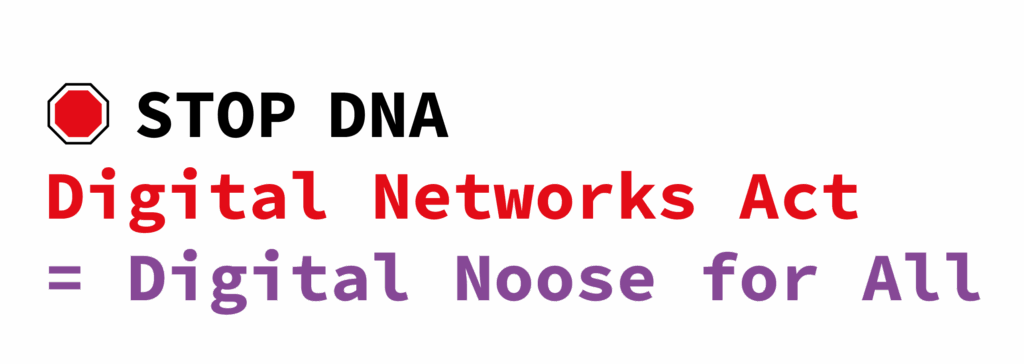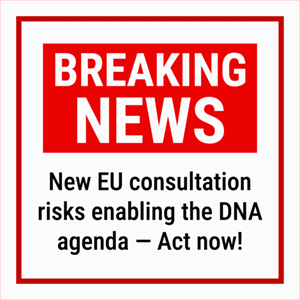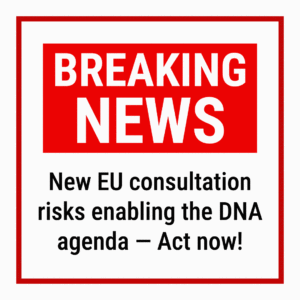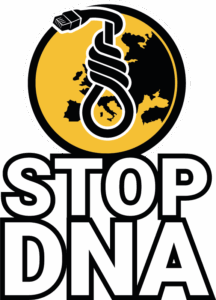ULTIME NOTIZIE
Sei Stati membri, tra cui Italia, Francia e Germania, presentano un non-paper contro il Digital Networks Act
Mercoledì 26 novembre, Italia, Francia, Germania, Austria, Slovenia e Ungheria hanno presentato un non-paper piuttosto critico sul Digital Networks Act al Working Party del Consiglio dell’UE sulle Telecomunicazioni, riprendendo preoccupazioni sollevate già mesi fa da AIIP.
Di seguito i punti principali:
- Forma giuridica: Richiesta alla Commissione europea di presentare il DNA come Direttiva
I sei Stati membri chiedono che il DNA venga adottato come una Direttiva, al fine di garantire flessibilità a livello nazionale, riflettere le differenze nei mercati delle telecomunicazioni e assicurare che le materie legate alla sovranità nazionale, come le intercettazioni, non siano governate dal principio del paese d'origine. - Spettro: Deve essere mantenuta la competenza complessiva degli Stati membri in materia di politica e gestione delle frequenze
Gli Stati membri devono conservare la responsabilità dell'allocazione dello spettro per garantire rapidità, efficienza e adattamento alle esigenze del mercato nazionale. Per motivi di sussidiarietà, la cooperazione a livello UE e i requisiti armonizzati dovrebbero essere esaminati prima di considerare qualsiasi centralizzazione. - Regolamentazione ex-ante: Le modifiche al sistema esistente di regolamentazione dell'accesso devono essere apportate con molta cautela e non devono indebolire la concorrenza o i benefici per i consumatori
Le modifiche normative devono essere minime per proteggere la concorrenza e i consumatori. Gli strumenti esistenti nel Codice Europeo delle Comunicazioni Elettroniche offrono già flessibilità. La regolamentazione ex-ante è particolarmente importante durante la transizione dal rame alla fibra, e lo switch-off a livello UE richiede una valutazione accurata per evitare costi più elevati, squilibri di mercato o un rallentamento della diffusione della connettività FTTH. - Governance: La struttura di governance del quadro europeo delle comunicazioni elettroniche funziona bene e non richiede modifiche sostanziali
L'attuale governance (BEREC e RSPG) è efficace. Incrementare i poteri a livello UE o aggiungere procedure aggiuntive contrasterebbe con l'obiettivo di semplificare e snellire la regolamentazione.
Source: Politico
17 Giugno 2025
Revisione della raccomandazione sui mercati rilevanti - un piano strategico di deregolamentazione
La Commissione sta rivedendo l'elenco dei mercati delle telecomunicazioni soggetti a regolamentazione ex-ante. Può sembrare una questione tecnica, ma l'obiettivo è chiaro: eliminare le garanzie che assicurano la concorrenza, aprire la porta a una dominanza di mercato incontrollata e spostare il potere decisionale dai regolatori nazionali.
Revisione della Raccomandazione sul mercato rilevante
Termine ultimo per la presentazione dei contributi: 17 settembre 2025.
Per oltre due decenni, la Raccomandazione sui mercati rilevanti è stata una pietra miliare della regolamentazione europea delle telecomunicazioni. Essa definisce quali mercati all'ingrosso devono essere regolamentati per garantire la concorrenza, l'innovazione e gli investimenti degli utenti finali. Ora, con il pretesto della “semplificazione”, la Commissione propone un cambiamento drastico: eliminare i mercati dall'elenco, indebolire i poteri dei regolatori nazionali e affidarsi esclusivamente al diritto generale della concorrenza.
Ciò significa che interi segmenti, come l'accesso locale, i servizi alle imprese di alta qualità o le infrastrutture fisiche, non potrebbero più essere soggetti a una regolamentazione preventiva. Al contrario, gli abusi dovrebbero essere provati dopo che il danno è stato fatto. È il classico schema della deregolamentazione: eliminare l'arbitro, lasciare che i giganti giochino secondo le loro regole e fare domande solo quando è troppo tardi.
La strategia alla base di questa consultazione è chiara: smantellare passo dopo passo i mercati regolamentati, erodere la concorrenza basata sulle infrastrutture e ridurre la regolamentazione ex-ante a uno strumento di ultima istanza, da utilizzare solo in casi di comprovato fallimento del mercato.
Si tratta di uno degli ingranaggi chiave del più ampio progetto del DNA.
17 Giugno 2025
Nuova consultazione sulla legge sulle infrastrutture Gigabit - Guida all'articolo 3
La Commissione europea ha lanciato un'altra consultazione, questa volta per definire le modalità di accesso alle infrastrutture esistenti nell'ambito del nuovo Gigabit Infrastructure Act (GIA). Ma sotto la superficie tecnica si nasconde una spinta strategica per riscrivere le regole di accesso e rafforzare la posizione degli operatori storici.
Consultazione sulla guida all'applicazione della legge sulle infrastrutture Gigabit
Termine ultimo per la presentazione dei contributi: 17 settembre 2025.
Il GIA è stato inizialmente introdotto come strumento tecnico per facilitare e accelerare la diffusione di reti ad altissima capacità in Europa. Tuttavia, la consultazione sull'articolo 3 rivela un obiettivo politico più ampio: centralizzare il controllo sulle condizioni di accesso, indebolire la regolamentazione simmetrica e fornire uno scudo legale agli operatori dominanti.
Non si tratta di semplificare le procedure. Si tratta di ridefinire ciò che costituisce un accesso “equo e ragionevole”, rendendo potenzialmente proibitivo o giuridicamente incerto l'accesso alle infrastrutture passive per gli operatori di piccole e medie dimensioni. Il linguaggio del questionario rende chiaro l'intento: la Commissione europea sta raccogliendo le giustificazioni per consentire un trattamento differenziato, prezzi discriminatori e restrizioni basate su “piani aziendali” o “strategie di investimento nella rete”.
Se associata all'imminente proposta sulla DNA, alla revisione del Codice Europeo delle Comunicazioni Elettroniche (EECC) e alla revisione della Raccomandazione sui Mercati Rilevanti, questa consultazione costituisce l'ennesimo elemento tattico di una strategia più ampia: smantellare l'attuale quadro delle telecomunicazioni basato sull'accesso aperto e competitivo e sostituirlo con un modello che favorisca i mega-operatori integrati verticalmente, scelti e autorizzati da Bruxelles.
16 Giugno 2025
Nuova metodologia UE sulla qualità del servizio 5G: un altro strumento per giustificare i sussidi pubblici agli operatori di telefonia mobile
La Commissione europea ha avviato una consultazione pubblica su una nuova “metodologia” per la mappatura della qualità del servizio (QoS) delle reti mobili e di accesso wireless fisso 5G. La consultazione rimarrà aperta fino al 27 giugno e può essere consultata qui:
https://ec.europa.eu/eusurvey/runner/5G-Quality-of-Service-mapping-methodologyQoS_5G_FWA
Questa iniziativa non è così innocua come potrebbe sembrare perché propone metriche teoriche, basate sulla simulazione, per valutare la QoS nominale - non l'esperienza effettiva dell'utente - e suggerisce che queste metriche potrebbero essere utilizzate per informare l'assegnazione degli aiuti di Stato nei futuri progetti di telecomunicazione.
Perché è pericoloso?
Perché si tratta di una mossa coordinata per sostenere la stessa agenda del DNA (Digital Networks Act): concentrare i fondi, distorcere la concorrenza e spingere la banda larga mobile come una valida alternativa alla fibra.
Senza un'adeguata trasparenza degli investimenti e senza obblighi di disaggregazione, questo è solo un altro tentativo di dirottare i sussidi dalle vere reti fisse alle mani degli operatori mobili dominanti.
Il DNA è sistemico.
13 Giugno 2025
Nuova consultazione UE sul Codice delle Comunicazioni Elettroniche (EECC): un altro tentativo di spianare la strada al DNA
EY e WIK-Consult, società di consulenza spesso incaricate dalla Commissione Europea di effettuare studi preparatori sulla regolamentazione delle telecomunicazioni e sulle tendenze del mercato, sono state incaricate di gestire una nuova consultazione pubblica sulla revisione del Codice Europeo delle Comunicazioni Elettroniche (EECC) e del Mercato Unico Digitale (DSM), con la stessa scadenza del bando DNA: 11 Luglio.
https://ec.europa.eu/eusurvey/runner/c9221526-34d4-5f9f-0554-c594a4adb139
Questionnaire_for_survey_on_EECC_and_DSM
Vale la pena notare che sia EY che WIK-Consult sono stati coinvolti in diversi rapporti chiave nel corso degli anni che hanno promosso narrazioni di consolidamento del mercato nel settore delle telecomunicazioni europeo, rendendo il loro ruolo in questa consultazione particolarmente significativo nell'attuale contesto politico.
Perché è importante?
Si tratta di una mossa coordinata per riscrivere il quadro tecnico e normativo a sostegno dell'agenda DNA:
- indebolire i poteri normativi nazionali
- facilitare il consolidamento del mercato
- minare le regole di accesso simmetrico
- promuovere modelli “leggeri” di neutralità della rete
- accelerare la chiusura del rame per favorire i grandi operatori storici della fibra
- ridefinire l'SMP per limitare l'intervento normativo sugli oligopoli emergenti.
In breve: un altro passo nella corsa della Commissione per consegnare le reti europee a pochi operatori dominanti.
Pubblicheremo molto presto le indicazioni per rispondere a questa consultazione.
Restate sintonizzati e spargete la voce.
6 Giugno 2025
La consultazione pubblica sul DNA è aperta: agite subito!
È in corso la consultazione pubblica della Commissione europea sul Digital Networks Act (DNA), la cui scadenza è fissata all'11 Luglio.
https://ec.europa.eu/info/law/better-regulation/have-your-say/initiatives/14709-Digital-Networks-Act_it
Scoprite come è nata questa proposta e perché rappresenta una minaccia per il futuro digitale dell'Europa:
How DNA was Born
Dobbiamo sommergere questa consultazione con una forte opposizione!




